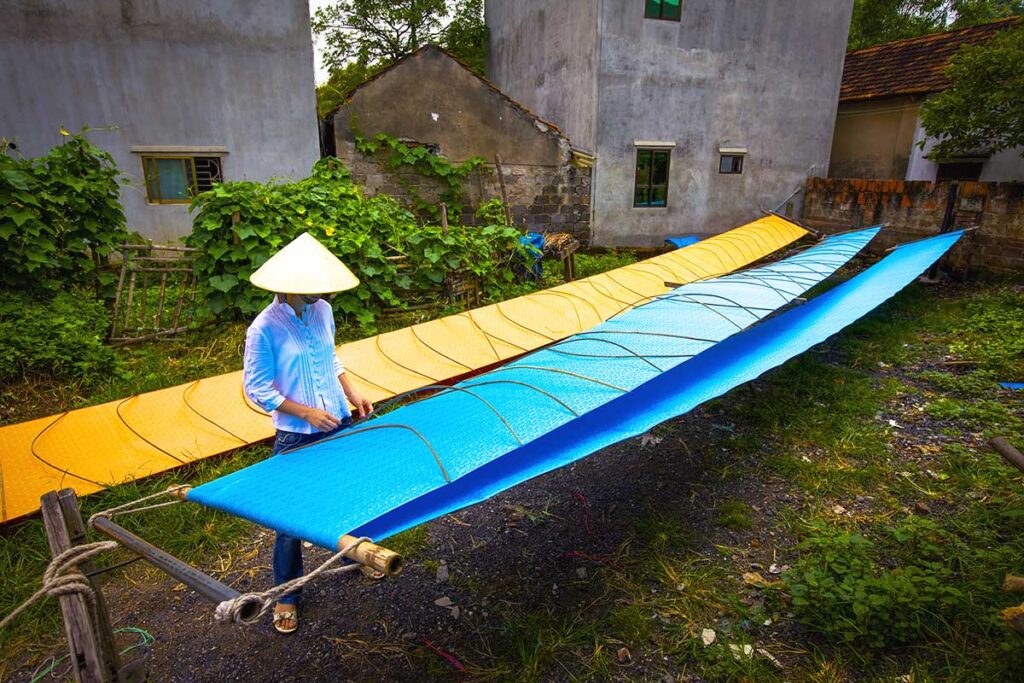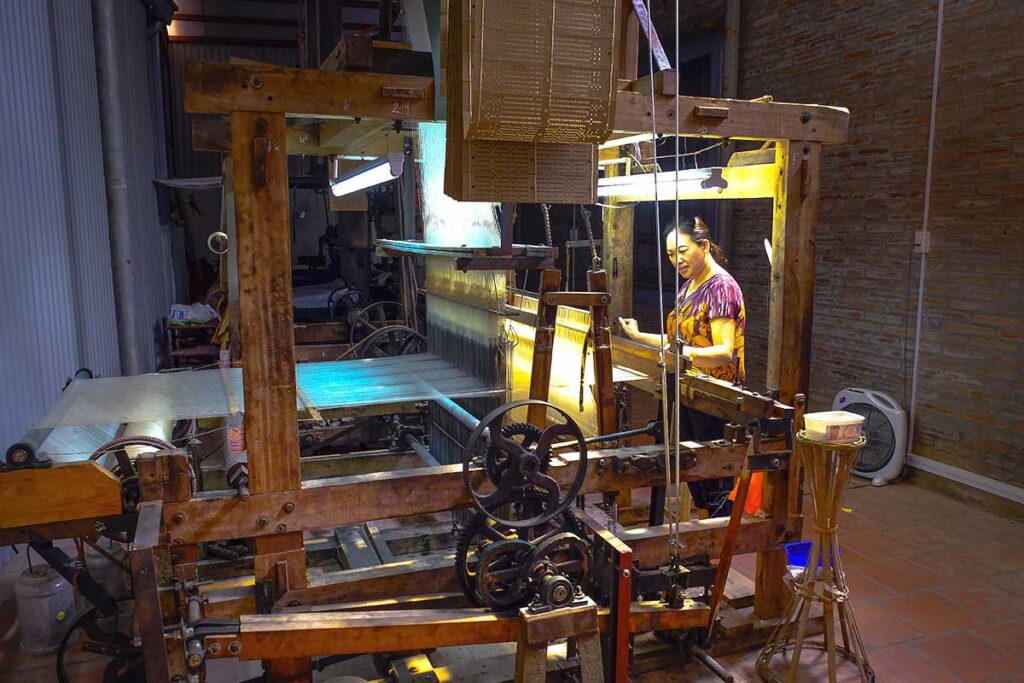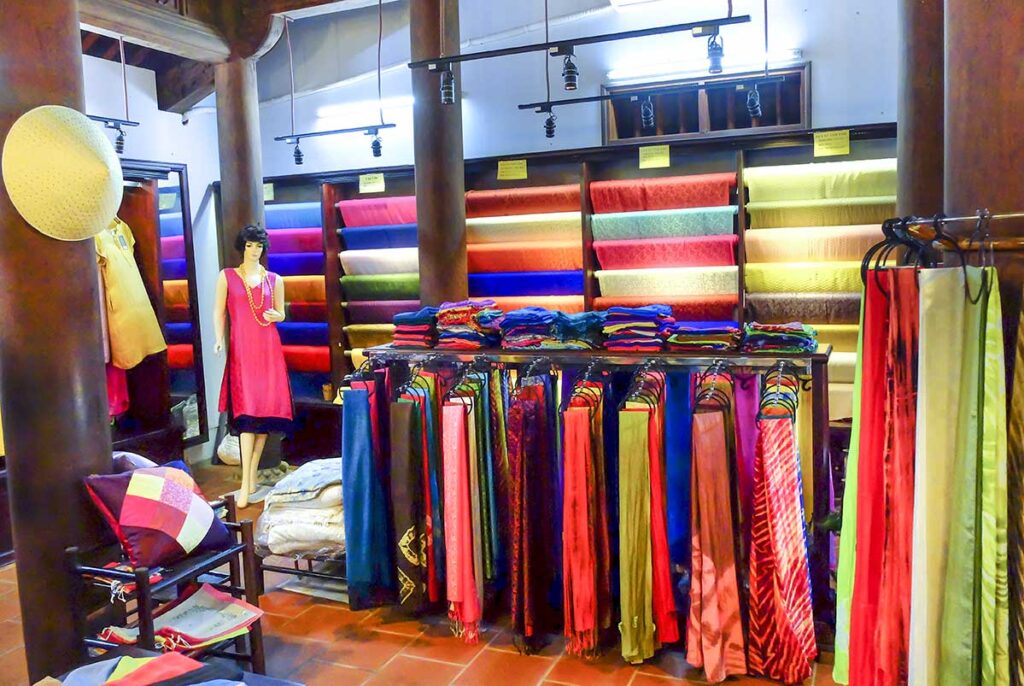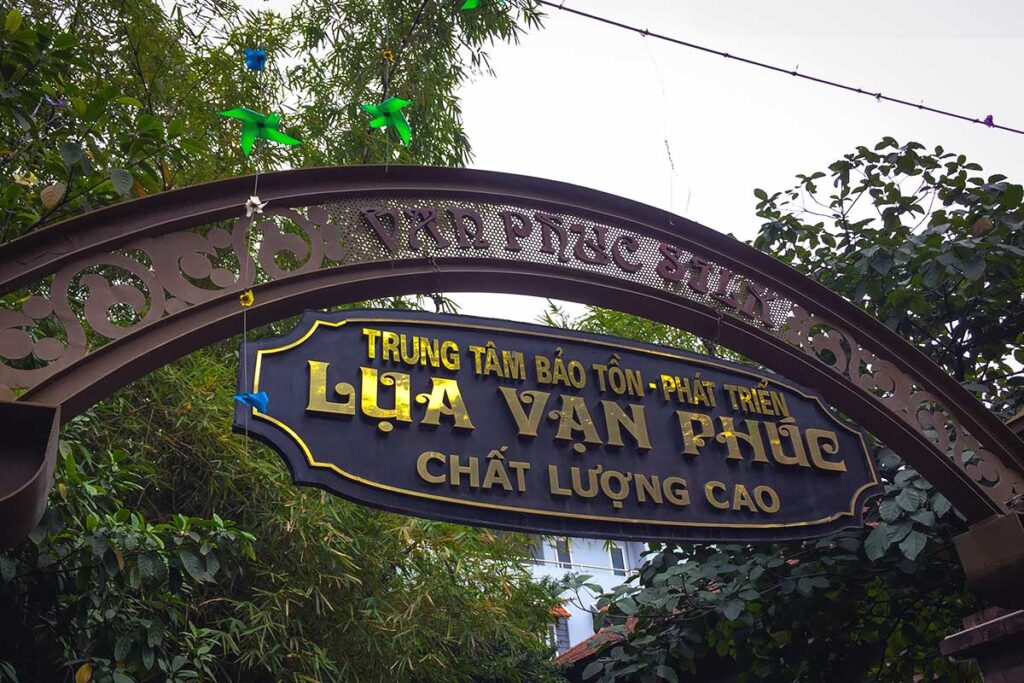Van Phuc Silk Village is a traditional silk-making village located about 10 km southwest of Hanoi’s city center. It is known for its high-quality silk products, skilled craftsmen, and a long history of silk-making. Visitors can experience the traditional silk-making process, shop for silk products, and enjoy the peaceful countryside setting.
Van Phuc Silk Village history
Van Phuc Silk Village is a place that has been known for its fine silk production for over a thousand years. Legend has it that during the Ly Dynasty (1009-1225), a Chinese princess named Hoang Phu Thu came to Vietnam and brought with her the art of sericulture and silk weaving. She taught the villagers in Van Phuc how to raise silkworms and weave silk.
Since then, Van Phuc Silk Village has grown to become one of the most famous silk weaving villages in Vietnam. During the Le Dynasty (1428-1788), Van Phuc Silk was the preferred fabric of royalty and wealthy families. In the 18th century, Van Phuc Silk was exported to Europe and became known as “Ha Dong Silk” after the village’s former name.
During the 20th century, Van Phuc Silk Village suffered from the effects of war and economic difficulties. However, the villagers persisted in preserving their traditional craft and eventually saw a resurgence in demand for their products in the 1990s.

Today, Van Phuc Silk Village is a popular destination for tourists and locals alike, who come to see the traditional silk weaving techniques and purchase high-quality silk products. The village has also been recognized as a National Intangible Cultural Heritage by the Vietnamese government, ensuring the preservation of this ancient craft for future generations.
Highlights of Van Phuc Silk Village
1. Watch skilled craftsmen

Visitors to Van Phuc Silk Village can watch skilled craftsmen at work, weaving silk threads into intricate patterns and designs using traditional looms. These craftsmen have inherited their skills and techniques from generations of their families and are proud to continue the tradition of silk weaving.

Watching the craftsmen at work is an incredible experience that gives visitors a unique insight into the process of silk production. From the spinning of the silk threads to the dyeing of the fabrics and the weaving of the intricate designs, every step of the process is done by hand, using traditional techniques that have been passed down through the generations.
2. Shopping silk products

You can buy a wide variety of silk products in Van Phuc Silk Village, such as scarves, clothes, ties, and handbags. There are many silk shops and outlets in the village, offering a wide range of products at different prices. The prices are generally cheaper than in Hanoi, but it’s always a good idea to bargain.
3. Explore the narrow streets
Walking through the narrow streets of the village is like taking a step back in time. The streets are lined with old-fashioned houses made of bricks and tiles. The streets are also quite narrow and winding, and it is easy to get lost in the maze of alleys. However, this is also part of the charm of the village, as it creates a sense of intimacy and closeness with the locals. Along the streets, you will find many small shops and stalls selling various silk products and souvenirs, and you can observe the locals going about their daily lives.
4. Try traditional Vietnamese cuisine
Some of the local dishes you can try in the village include:
- Banh cuon (steamed rice rolls): This dish consists of a thin, delicate rice sheet filled with minced pork and mushrooms and served with dipping sauce.
- Bun cha (grilled pork with noodles): This is a popular Vietnamese dish consisting of grilled pork served with rice noodles, fresh herbs, and a sweet and savory dipping sauce.
- Pho cuon (rice noodle rolls): This dish is made with delicate rice noodles wrapped around pork, shrimp, and fresh herbs, and served with a dipping sauce.
- Nem (spring rolls): These crispy spring rolls are filled with ground pork, shrimp, and vegetables and served with a sweet and sour dipping sauce.
- Cha ca (turmeric fish with noodles): This Hanoi specialty is made with marinated fish that is grilled with turmeric and served with rice noodles, fresh herbs, and peanuts.
These dishes can be found at local eateries and food stalls in Van Phuc Silk Village, and are a great way to experience the local culture and cuisine.
5. Participate in a silk weaving workshop
You can participate in a silk weaving workshop at Van Phuc Silk Village. Many workshops offer hands-on experiences where you can learn how to weave silk and create your own silk products. These workshops provide a great opportunity to learn about the traditional techniques and skills involved in silk production, and you can take your finished product home as a souvenir. Some workshops may require advanced booking, so it is best to check ahead of time.
Visiting information
- Entrance fee: There is no entrance fee to enter the village.
- Opening times: The village is open every day from 8:00 am to 5:00 pm.
- Peak hours: The village can get crowded during weekends and holidays, so it is best to visit on weekdays to avoid the crowds.
- Dress code: There is no strict dress code, but it is recommended to dress modestly and comfortably. If you plan to visit a temple or pagoda, it is important to dress respectfully and cover your shoulders and knees.
How to get there

Van Phuc Silk Village is located about 10 kilometers southwest of Hanoi’s Old Quarter and there are a few way to get their:
- Taxi: You can easily find a taxi in Hanoi Old Quarter that will take you to Van Phuc Silk Village. The ride will take about 30 minutes, depending on traffic. The cost of the taxi ride will vary depending on your bargaining skills, but it should be around 200,000 VND to 300,000 VND.
- Motorbike: You can rent a motorbike in Hanoi Old Quarter and drive to the village yourself. The ride will take about 30 minutes, depending on traffic. Be sure to have a map or GPS with you to avoid getting lost.
- Bicycle: You can also rent a bicycle in Hanoi Old Quarter and cycle there. The ride will take about an hour, depending on your cycling speed and the route you take.
- Tour: There are tours available that include a visit to Van Phuc Silk Village from Hanoi. These tours typically include transportation, a tour guide, and sometimes additional activities such as a silk weaving workshop or traditional music and dance performance.
Other craft villages around Hanoi
Expand your Hanoi adventure by visiting nearby craft villages. Quang Phu Cau Incense Village offers vibrant incense production, while Bat Trang Ceramic Village showcases traditional pottery. Duong Lam Ancient Village, Le Mat Snake Village, Chang Son Hand Fan Village, Chuong Conical Hat Village, and Quat Dong Embroidery Village each provide unique cultural experiences.






